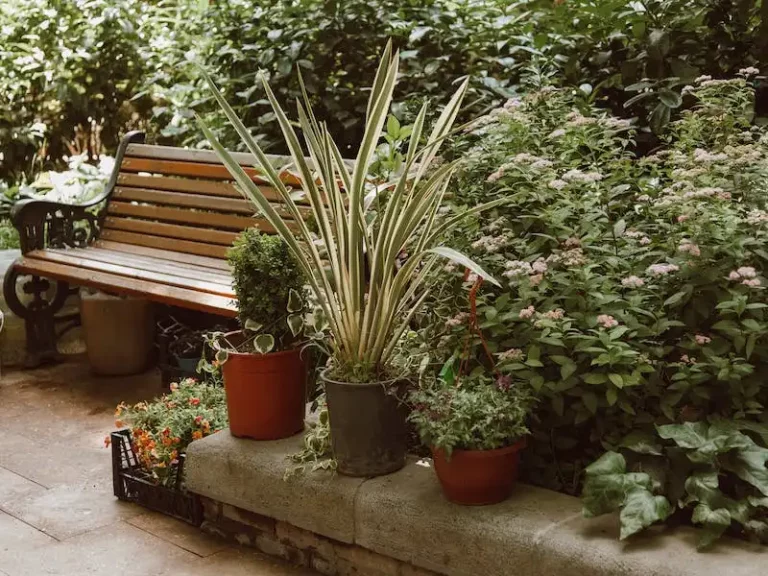Growing chamomile lawns is a great way to create a soothing and beautiful carpet of flowers in your garden. Chamomile, often used for its medicinal and soothing properties, can also be grown as a ground cover. It is easy to grow and care for, making it suitable for both experienced gardeners and beginners.
One of the first things to consider when growing chamomile lawns is the site. Chamomile plants prefer full sun, but they can tolerate some light shade. They also prefer well-draining soils. If you have heavy clay or compacted soils, it’s a good idea to amend the earth with some organic matter to improve drainage.
When you are ready to begin, you can choose to start chamomile lawns from seedlings or from seeds. If you decide to start from seeds, it’s best to sow them directly on the site where you want the chamomile to grow. Chamomile seeds are very small and packed in teabag-like sachets. To ensure good germination, it’s important to prepare the site thoroughly by removing any weeds or grass. You can then sprinkle the seeds evenly over the area, lightly pressing them into the soil.
Chamomile is a slow germinator, often taking a week or more to sprout. Once the seedlings appear, you will need to water them regularly. Chamomile plants prefer to be moist but not waterlogged. Aim to water deeply but infrequently, allowing the soil to dry out between waterings. This will encourage the plants to develop deep roots and create a more tolerant and drought-resistant lawn.
Once your chamomile lawns are established, you can care for them by mowing lightly after the flowers have faded. This will help to promote further growth and prevent any grass or weeds from taking over the site. Chamomile lawns are usually low-growing, reaching only about a foot in height, so mowing should be minimal.
In addition to being a great addition to your garden, chamomile lawns have many uses. The flowers can be harvested and used to make soothing teas or floral sachets. The Roman and German varieties of chamomile are most commonly used for these purposes. The flowers of chamomile lawns are also great for attracting pollinators to your garden, creating a beautiful and vibrant setting.
“Chamomile lawns are indeed a great way to enjoy the beauty and benefits of chamomile plants in your garden. Whether you wish to create a soothing and fragrant carpet of flowers or harvest the flowers for their medicinal uses, growing chamomile lawns is a rewarding experience. Care for the plants well, and you will be rewarded with a beautiful and low-maintenance lawn.”
How to Create a Chamomile Lawn
If you’ve ever walked through a chamomile garden, you’ve most likely noticed the light, floral scent that fills the air. A chamomile lawn can be a great addition to any garden, providing a carpet of delicate flowers that won’t require much care.
When choosing a site for your chamomile lawn, you’ll want to find an area with full sun to light shade. Chamomile prefers well-drained soil, so make sure the site has good drainage. If your soil is heavy clay, consider amending it with organic matter to improve drainage.
Before planting chamomile, prepare the site by thoroughly watering the area. This will help settle the earth and create a good environment for the seeds or seedlings to grow. If you’re planting chamomile seeds, sprinkle them evenly over the prepared site and lightly press them into the soil. For best results, germinate the seeds above the ground and keep them moist to encourage growth.
English chamomile (Chamaemelum nobile) and Roman chamomile (Chamaemelum nobile), which are the most commonly grown chamomile species for lawns, prefer slightly different growing conditions. English chamomile prefers a drier and warmer setting, while Roman chamomile can handle cooler and wetter areas. Depending on your location and climate, you may choose to plant one or both varieties.
Chamomile is often grown from seed, but you can also start with chamomile seedlings. Plant the seedlings about a foot apart to allow room for growth. If you’re planting chamomile as an alternative to a traditional lawn, you can plant the seedlings closer together to create a denser carpet of chamomile flowers.
One thing to keep in mind when growing chamomile lawns is that they don’t tolerate heavy foot traffic. Avoid walking or setting heavy objects on the chamomile lawn to prevent damage to the delicate plants.
Chamomile lawns have many uses, both decorative and medicinal. The flowers can be used to make a soothing tea, and chamomile sachets can be placed in your linen closet or under your pillow for a calming effect. The flowers also attract bees and other beneficial insects to your garden.
To care for your chamomile lawn, water it regularly but avoid over-watering. Chamomile doesn’t like sitting in wet soil for extended periods. Fertilizing is usually not necessary, as chamomile is a low-maintenance plant and tends to grow well without added nutrients.
When the chamomile flowers have finished blooming, you can mow the lawn with the blades set on the highest setting. This will help keep the chamomile plants tidy and promote new growth. You can also collect the spent flowers and use them for various purposes, such as making potpourri or drying them for tea.
Whether for its decorative or medicinal uses, growing chamomile lawns can be a rewarding experience. With proper care and maintenance, you can create a beautiful carpet of chamomile flowers that will enhance your garden and provide a relaxing atmosphere.
Is your garden suitable
Before planting a chamomile lawn, it’s important to determine if your garden is suitable for this lovely and fragrant ground cover. Chamomile lawns require specific conditions to thrive, so it’s essential to assess your garden before you start planting.
One of the first things you should consider is the type of soil in your garden. Chamomile usually grows best in well-drained, sandy or loamy soils. If your garden has heavy clay soils that tend to become waterlogged, chamomile may not be the best choice.
Next, think about the location of your garden. Chamomile lawns generally prefer full sun, although they can tolerate light shade. If your garden is heavily shaded, chamomile may not receive enough sunlight to grow properly.
Additionally, consider the climate in your area. Chamomile is a hardy plant, but it thrives in warmer climates. If you live in a cooler region, chamomile may not grow as vigorously or produce as many flowers.
Another important factor to consider is the amount of foot traffic your garden receives. Chamomile lawns are great for low-traffic areas, but they won’t withstand heavy use. If your garden is a high-traffic area or if you plan to walk on the chamomile lawn regularly, it may not hold up well.
When it comes to caring for chamomile lawns, watering is an essential aspect. Chamomile plants usually need thorough watering once or twice a week, especially during dry periods. However, be careful not to overwater, as chamomile doesn’t like overly wet conditions.
Preparing the site for planting chamomile is also crucial. Start by clearing the area of any weeds or unwanted plants. You can then work the soil thoroughly to create a nice planting bed for the chamomile seedlings.
Once the site is prepared, you can proceed with planting the chamomile. Scatter the chamomile seeds evenly over the prepared area. You can also plant chamomile seedlings if you wish to establish your chamomile lawn faster.
Care should be taken to water the newly planted chamomile regularly to promote germination and growth. In a few weeks, you’ll begin to see the soothing green foliage and the aromatic flower heads of chamomile.
Chamomile lawns have many uses, ranging from their soothing scent to their herbal properties. They are often used for making chamomile tea or sachets. If you’ve ever walked on a chamomile lawn, you know just how delightful it can be.
In conclusion, before planting a chamomile lawn, consider the suitability of your garden by evaluating the soil type, location, climate, and foot traffic. With the right conditions and proper care, chamomile lawns can be a great alternative to standard grass lawns, providing a beautiful and fragrant setting for your home and garden.
Preparing the site
Before you begin growing a chamomile lawn, it is important to choose a suitable site. Chamomile plants thrive in full sun, so find an area in your garden that receives at least 6 hours of direct sunlight each day. The soil should be well-draining, as chamomile does not tolerate wet feet. If your soil is heavy and clay-like, consider improving the drainage by adding organic matter such as compost or well-rotted manure.
Once you’ve selected the ideal site for your chamomile lawn, it’s time to prepare the ground. Start by removing any existing grass or weeds from the area. You can use a grass killer if needed, but be sure to follow the instructions and wait for the recommended time before proceeding. Next, loosen the soil to a depth of about 6 inches using a garden fork or tiller. Remove any large rocks or debris that you come across.
After preparing the site, water the area thoroughly. This will help settle the soil and ensure that the chamomile seeds make good contact with the earth when planted. Chamomile seeds are very small and should only be sown on the surface of the soil. Sprinkle the seeds evenly over the desired area, aiming for a density of about 1 teaspoon per square foot. After sowing, gently press the seeds into the soil to ensure good seed-to-soil contact.
Germination typically takes about 1 to 2 weeks, depending on the variety of chamomile and the temperature of the air and soil. During this time, be sure to keep the soil consistently moist, but not waterlogged. To prevent washing away the seeds, it’s best to use a gentle watering method such as a misting nozzle or a soaker hose.
Once the chamomile seedlings have emerged, continue to water them well, but be careful not to overwater. Chamomile plants have delicate and feathery leaves, so avoid overhead watering if possible. Watering at the soil level will help prevent fungal diseases and encourage healthy growth.
In areas with hot summers, it may be necessary to provide some shade for the chamomile lawn. This can be done by planting taller plants or using shade cloth. Alternatively, you can also plant chamomile in partial shade areas.
As your chamomile lawn grows, you can lightly mow it to maintain a height of about 2 to 4 inches. This will encourage a thicker carpet-like growth and discourage weeds from taking hold. It is also a good idea to walk on the chamomile lawn occasionally to release its sweet aroma.
Chamomile lawns have many uses and are a great alternative to standard turf grass. The plants can be harvested and dried to make herbal teas, sachets, or herbal pillows. The flowers can also attract pollinators to your garden and create a beautiful and fragrant landscape.
In conclusion, preparing the site accordingly is essential for a successful chamomile lawn. Choose a sunny, well-draining spot, remove existing vegetation, loosen the soil, and water thoroughly. After sowing the seeds, keep the soil consistently moist and provide shade if necessary. Once established, care for your chamomile lawn by watering at the soil level, mowing lightly, and enjoying its many uses and benefits.




